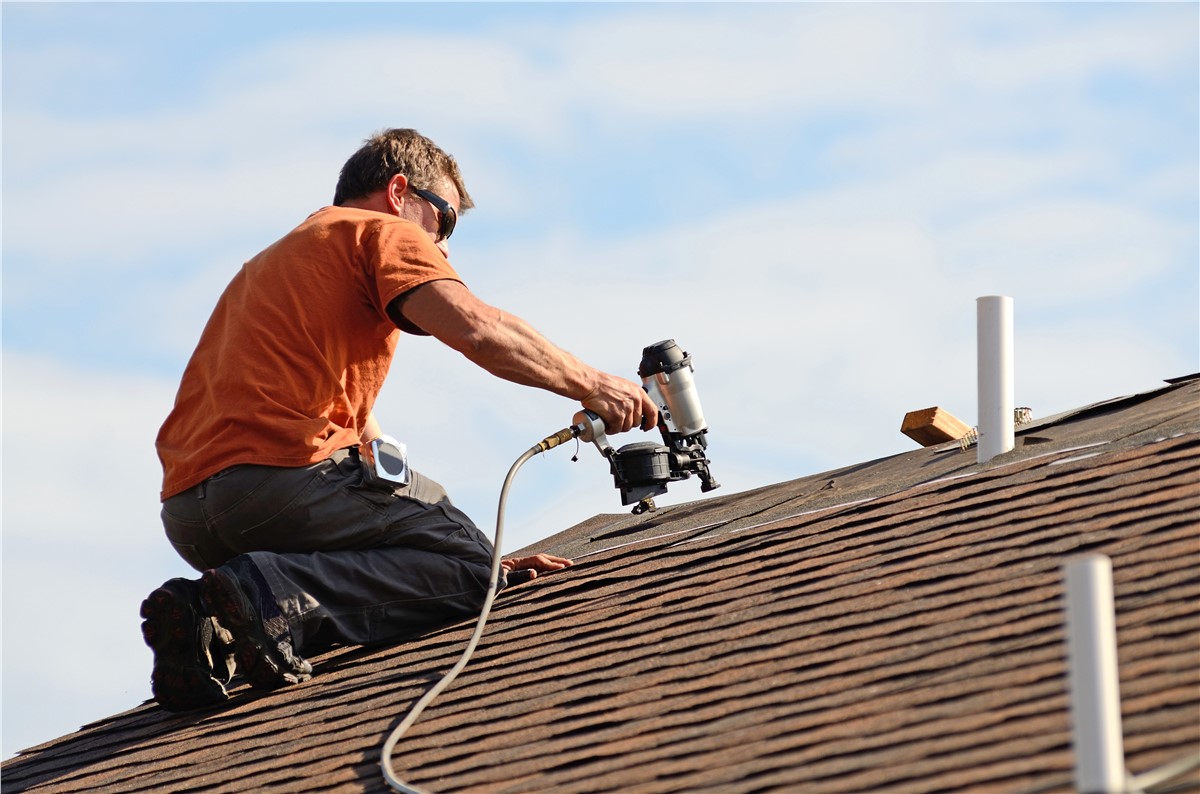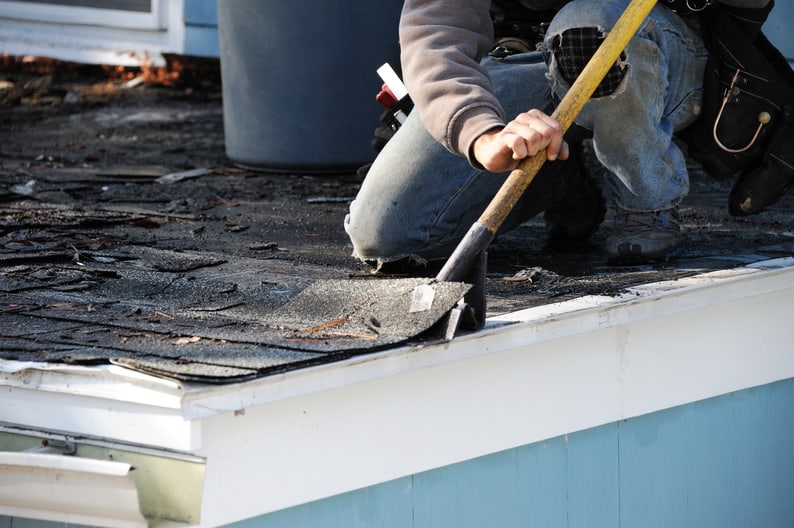Understanding the Various Sorts Of Roofs: A Comprehensive Guide for Homeowners
In the realm of homeownership, selecting the ideal roof design is a choice that brings considerable ramifications for both performance and aesthetic allure. With a selection of options-- ranging from the conventional gable to the contemporary flat-- each kind presents unique advantages and obstacles that need to straighten with the house owner's certain requirements and ecological considerations. Understanding these distinctions not just aids in making an educated selection however likewise influences lasting upkeep and power efficiency. As we explore the complexities of numerous roof covering kinds, it becomes apparent that one dimension does not fit all; the best option might stun you.
Saddleback Roof
Gable roofs, identified by their triangular shape, are amongst the most preferred roof covering styles as a result of their simplicity and efficiency in shedding water and snow. This layout includes two sloping sides that meet at a ridge, permitting for reliable water drainage and reducing the risk of water accumulation. The high pitch commonly related to gable roofs enhances their capability to take care of heavy rainfall, making them suitable for different climates.
Along with their practical benefits, gable roofings supply visual flexibility. They can be adapted to different building designs, from standard to modern-day homes. The design can likewise suit added attributes such as dormer windows, which enhance natural light and ventilation in the attic room room.
Moreover, gable roof coverings supply enough room for insulation, adding to power effectiveness. House owners can select from a selection of roof covering products, including asphalt shingles, metal, and ceramic tiles, even more improving modification alternatives.
Regardless of their benefits, gable roofings might require added assistance in locations susceptible to high winds or hefty snowfall. Generally, the saddleback roof stays a preferred choice due to its blend of functionality, sturdiness, and aesthetic charm.
Flat Roofs
Flat roofs are frequently recognized for their minimal layout and useful applications, particularly in industrial and commercial setups (oahu roofing). These roofs include a virtually horizontal or horizontal surface area, which enables for easy building and functional room usage. While they may lack the visual allure of angled roofs, flat roofing systems offer many benefits, particularly in urban settings where optimizing space is critical
One of the key benefits of level roofing systems is their ease of access. Property owners can make use of the roofing system space for various objectives, such as rooftop gardens, balconies, or solar panel installations. Furthermore, level roofing systems are normally a lot more affordable to set up and keep contrasted to their sloped counterparts, as they need less products and labor.
Nevertheless, level roofing systems do existing particular challenges. Appropriate water drainage is vital to stop water merging, which can bring about leaks and structural damages. Thus, selecting high-quality waterproofing materials and regular assessments are critical for guaranteeing durability. Usual products used for flat roofing systems consist of built-up roof covering (BUR), changed bitumen, and single-ply membranes, each offering unique advantages. In general, flat roofings work as a adaptable and practical option for many homeowners and companies alike.
Hip Roofings
Hip roofings are identified by their sloped sides that converge on top, developing a ridge. This layout is distinctive from gable roof coverings, as all four sides of a hip roofing incline downwards toward the wall surfaces, providing an extra steady structure. The angle of the inclines can vary, allowing for versatility in building looks and functionality.
Among the main benefits of hip roofings is their ability to withstand hefty winds and unfavorable weather. The sloped surfaces make it possible for better water drain, minimizing the risk of leakages and water damage. In addition, hip roofings offer enhanced attic space, which can be made use of for Web Site storage or perhaps converted right into comfortable locations.
Nevertheless, building a hip roof covering can be much more intricate and costly than less complex roof types, such as saddleback roofs. The additional material and labor associated with developing the inclines and making sure proper architectural stability can lead to higher costs. Regardless of these downsides, numerous home owners prefer hip roofing systems for their longevity, visual allure, and capacity for energy efficiency.
Mansard Roofing Systems
Mansard roofs, often recognized by their distinct four-sided design, function 2 slopes on each side, with the lower incline being steeper than the top. This building style, originating from France in the 17th century, is not just cosmetically enticing yet practical, as it takes full advantage of the usable space in the upper floors of a building. The steep lower incline allows for even more headroom, making it a perfect choice for attics or loft spaces, which can be converted into living spaces.
Mansard roofings are characterized by their adaptability, suiting different building styles, from typical to modern-day. They can be created with different products, consisting of asphalt tiles, slate, or metal, providing homeowners with a series of options to suit their preferences and budgets. Additionally, the design enables the assimilation of dormer home windows, enhancing natural light and air flow in the top levels.
Nonetheless, it is important to consider the prospective drawbacks. Mansard roof coverings might call for more upkeep due to the complexity of their design, and their steep inclines can be challenging for snow and rainfall runoff. Overall, mansard roofings combine style with practicality, making them a preferred option amongst homeowners looking for distinct architectural attributes.
Dropped Roofs
As homeowners increasingly seek simpleness and capability in their architectural styles, lost roofs have actually become a preferred option. Identified by a solitary sloping airplane, a shed roof covering presents a minimal visual that enhances different home styles, from contemporary to rustic.
One of the key advantages of a shed roofing system is its uncomplicated construction, which typically translates to reduce labor and product costs. This design allows for effective water drain, lowering the risk of leaks and water damage. Furthermore, the vertical slope supplies adequate area for skylights, boosting all-natural light within the inside.
Lost roofings likewise supply adaptability in regards to use. They can be effectively incorporated right into enhancements, garages, or outdoor frameworks like sheds and pavilions. In addition, this roofing system style can accommodate different roofing products, including metal, asphalt shingles, or also eco-friendly roofings, lining up with green initiatives.
However, it is necessary to think about regional climate conditions, as heavy snow loads might demand modifications to the roof's angle or framework. On the whole, shed roof coverings provide a functional and visually pleasing choice for house owners looking to make the most of capability without compromising design.
Final Thought


Gable roof coverings, characterized by their triangular shape, are among the most popular roof covering designs due to their simplicity and performance in dropping water and snow. oahu roofing. The high pitch typically linked with gable roofing systems enhances their capability to manage hefty precipitation, making them appropriate for different environments
While they might lack the aesthetic charm of pitched roofs, flat roofing systems supply many benefits, particularly in city atmospheres where making best use of area is essential.
